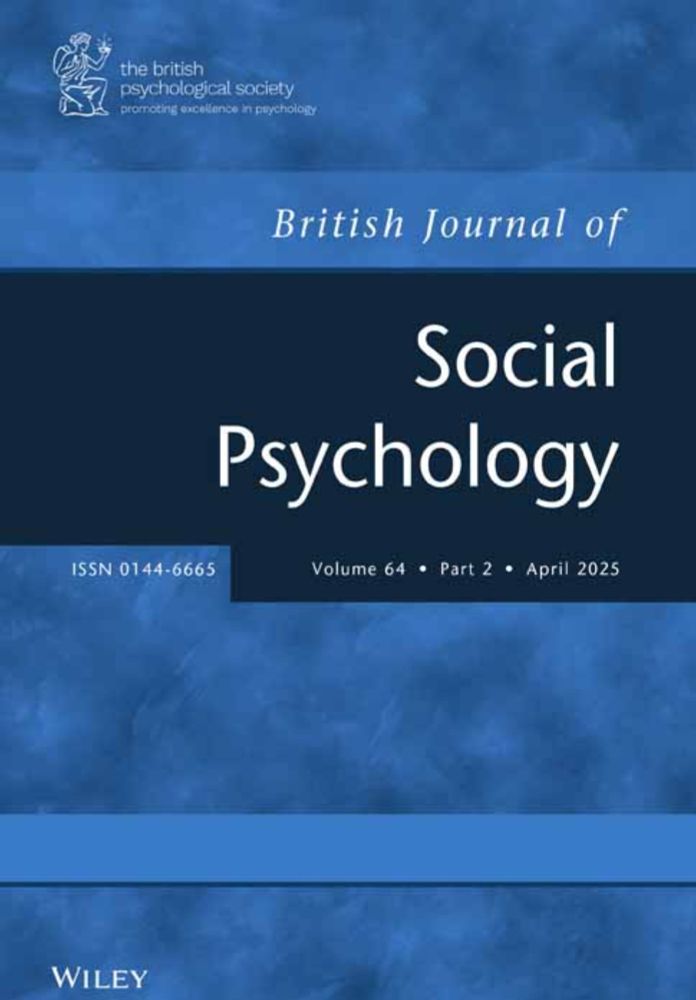
Really appreciate the shoutout!"
Really appreciate the shoutout!"
This is just the start— keep an eye out for more standout contributions from her in the future.
(5/5)
This is just the start— keep an eye out for more standout contributions from her in the future.
(5/5)
Classic models of social identification don’t fully capture the experiences of stigmatized groups: Identification isn’t tied to positive group evaluation — people can strongly identify even with negatively viewed groups.
Time for more inclusive, context-sensitive theorizing (!)
(4/5)
Classic models of social identification don’t fully capture the experiences of stigmatized groups: Identification isn’t tied to positive group evaluation — people can strongly identify even with negatively viewed groups.
Time for more inclusive, context-sensitive theorizing (!)
(4/5)
Both group-level factors (e.g., socioeconomic position, group entitativity) and individual belief systems (e.g., perceived permeability, legitimacy) shape social identification.
Social identity is both 𝘱𝘦𝘳𝘴𝘰𝘯𝘢𝘭 and 𝘤𝘰𝘯𝘵𝘦𝘹𝘵𝘶𝘢𝘭.
(3/5)
Both group-level factors (e.g., socioeconomic position, group entitativity) and individual belief systems (e.g., perceived permeability, legitimacy) shape social identification.
Social identity is both 𝘱𝘦𝘳𝘴𝘰𝘯𝘢𝘭 and 𝘤𝘰𝘯𝘵𝘦𝘹𝘵𝘶𝘢𝘭.
(3/5)
Across 18 groups in the U.S., we found that the widely used multicomponent ingroup identification model doesn’t fit these groups particularly well — identity structures vary substantially.
(2/5)
Across 18 groups in the U.S., we found that the widely used multicomponent ingroup identification model doesn’t fit these groups particularly well — identity structures vary substantially.
(2/5)
It’s not comprehensive—but hopefully a step toward deeper conversations about how to move the field forward.
It’s not comprehensive—but hopefully a step toward deeper conversations about how to move the field forward.
Part critique, part love letter, the piece revisits a few selected issues in STI research—not everything, but some things that might be worth a closer look.
Part critique, part love letter, the piece revisits a few selected issues in STI research—not everything, but some things that might be worth a closer look.

This paper is an incredible accomplishment for an early career-researcher!
Check it out!
onlinelibrary.wiley.com/doi/10.1002/...
This paper is an incredible accomplishment for an early career-researcher!
Check it out!
onlinelibrary.wiley.com/doi/10.1002/...
With its solid theoretical foundation, the paper allows to derive research questions and hypotheses that will guide future research for years to come.
Added plus: The paper also provides THE most comprehensive literature review of existing research on Mixed identities.
With its solid theoretical foundation, the paper allows to derive research questions and hypotheses that will guide future research for years to come.
Added plus: The paper also provides THE most comprehensive literature review of existing research on Mixed identities.
The paper delves into the complexities of the social identification processes for Mixed individuals, examining how individual and contextual factors may shape their self-categorization and social identification.
The paper delves into the complexities of the social identification processes for Mixed individuals, examining how individual and contextual factors may shape their self-categorization and social identification.
The paper delves into the complexities of the social identification processes for Mixed individuals, examining how individual and contextual factors may shape their self-categorization and social identification.
The paper delves into the complexities of the social identification processes for Mixed individuals, examining how individual and contextual factors may shape their self-categorization and social identification.

